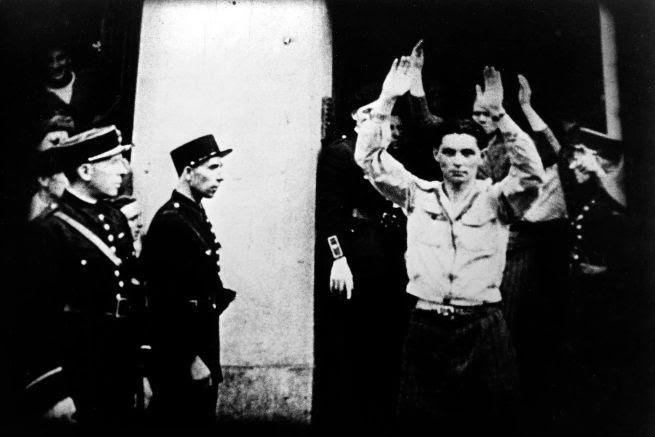Review: ‘The Sorrow and the Pity’: Once illegal, now in theaters
The film returned to theaters on Feb. 24, 50 years after director Marcel Ophuls exposed how the French Vichy government secretly collaborated with the Nazis during World War II.
The 4K restoration of “The Sorrow and the Pity” is playing daily at Film Forum. (Courtesy of Kino Lorber)
February 27, 2023
“The Sorrow and the Pity,” a landmark documentary from 1969, is now in theaters with a breathtaking 4K restoration after years of being banned. The film immerses viewers in the treason, pain and deception that occurred in Vichy France: the four years when the Nazis’ totalitarian regime controlled a puppet French government.
As the Nazis steamrolled through Europe, the leader of France, Marshal Philippe Pétain, allowed the destruction of his country to unfold. While other countries resisted or surrendered to Hitler, Pétain believed he could repair France by working with the Nazis, leading to his eventual imprisonment and demise.
France was a wasteland littered with concentration camps and bomb cradles, and seeing this footage patched together is an emotional rollercoaster. Chilling clips show refugees parading down the street only to be shot down next to shells of cars and buildings. Unforgettable images of utter destruction are juxtaposed with pictures of Hitler smiling like a tourist on a Parisian vacation.
In this widely acclaimed film which received an Oscar nomination, French-German director Marcel Ophuls fused live footage and recorded news from that tragic time with real-time interviews of many who lived through the era. Set in the small city of Clermont-Ferrand, not far from Vichy, and filmed in the 1960s, the film includes interviews with those who experienced this tragedy, sewing a tapestry between those who supported, resisted and ignored it.
To blend these perspectives, Ophuls gathered witnesses of different political ideologies, social classes, occupations and war experiences. These interviews took place in locations ranging from homes in which families were smoking and drinking, to streets with curious onlookers, and pastoral areas and museums. Ophuls most notably interviewed Prime Minister Pierre Mendès of France, German officer Walter Warlimont and Prime Minister Robert Anthony Eden of the United Kingdom. He allows them to openly share their personal wartime experiences in a conversational and unscripted manner without challenging their thoughts or beliefs. The French middle class, known as the bourgeoisie, describe their lives as relatively unchanged by the Nazi occupation, with some saying they were actually more successful during this period. Some confessed that while Nazis were mostly associated with Germans, there were some French people that were no better, even after the war.
After World War II, the Vichy government stood firm, stating that they opposed Nazi occupation in France, a claim the film explicitly contradicts. “The Sorrow and the Pity” has rightfully earned its place in cinematic history for directly addressing the myth of a near-universal French resistance and challenging the Vichy-controlled film industry. The interview confessions exposing France’s true intentions were so controversial that the film was banned in France until 1981. The Vichy government attempted to silence free speech by suppressing films like this, which either placed France in a bad light or focused on the damage done to France’s Jewish community by Nazi collaborators.
Despite being a long, two-part documentary, the film preserves a dark and critical part of human history, and is often painful and agonizing to watch. The bitesize clips with often unbelievable archival footage makes the movie feel like shorter episodes in a series. Ophuls delivers evidence of the Vichy-Nazi collaboration, which promulgated French antisemitism. He masterfully weaves together powerful interviews and devastating footage to reveal the truth of the time and counter decades of Vichy propaganda.
“The Sorrow and the Pity” is now showing at the Film Forum until March 2.
Contact Ashley Simons at [email protected].
























































































































































